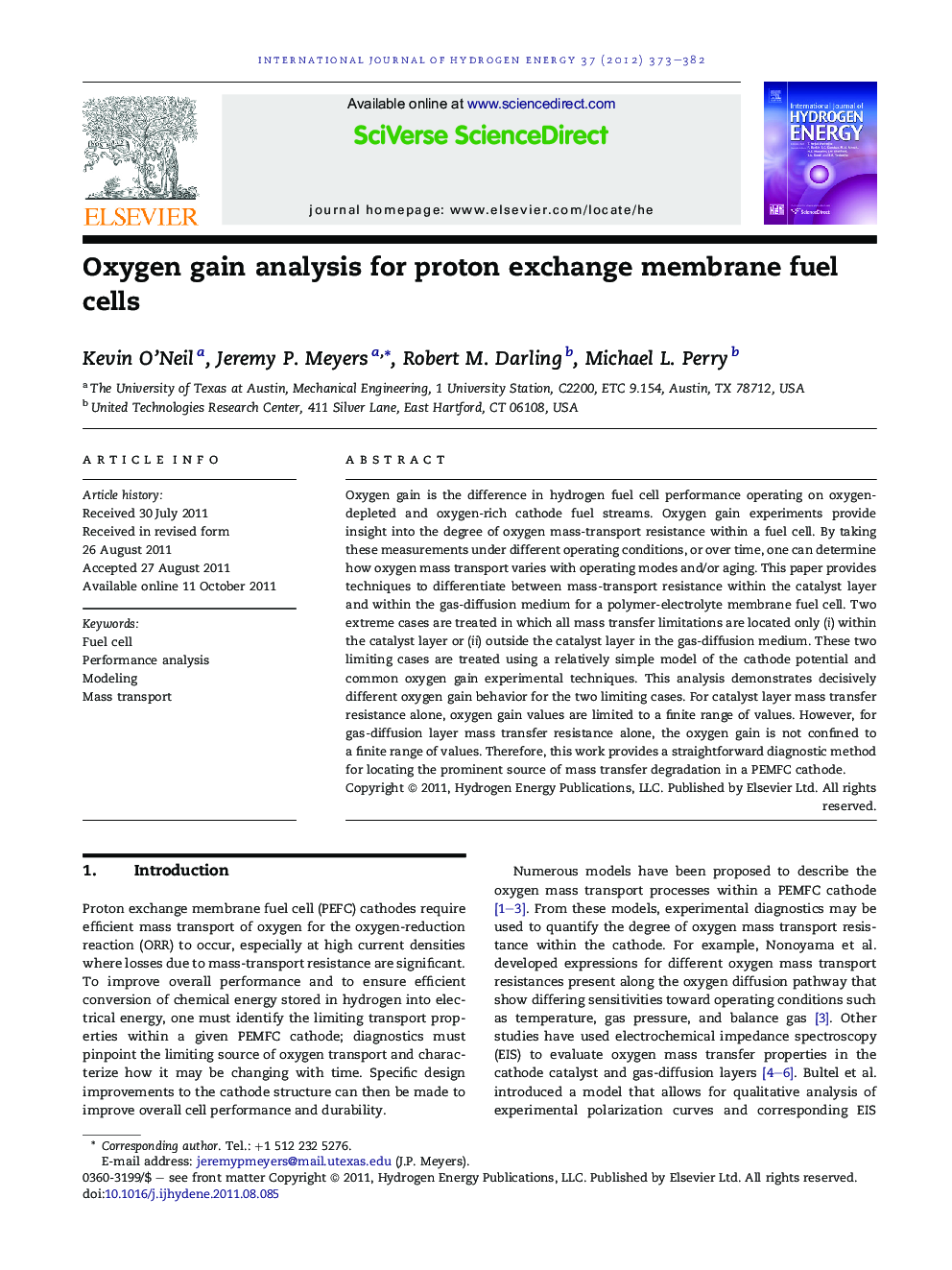| Article ID | Journal | Published Year | Pages | File Type |
|---|---|---|---|---|
| 1277152 | International Journal of Hydrogen Energy | 2012 | 10 Pages |
Oxygen gain is the difference in hydrogen fuel cell performance operating on oxygen-depleted and oxygen-rich cathode fuel streams. Oxygen gain experiments provide insight into the degree of oxygen mass-transport resistance within a fuel cell. By taking these measurements under different operating conditions, or over time, one can determine how oxygen mass transport varies with operating modes and/or aging. This paper provides techniques to differentiate between mass-transport resistance within the catalyst layer and within the gas-diffusion medium for a polymer-electrolyte membrane fuel cell. Two extreme cases are treated in which all mass transfer limitations are located only (i) within the catalyst layer or (ii) outside the catalyst layer in the gas-diffusion medium. These two limiting cases are treated using a relatively simple model of the cathode potential and common oxygen gain experimental techniques. This analysis demonstrates decisively different oxygen gain behavior for the two limiting cases. For catalyst layer mass transfer resistance alone, oxygen gain values are limited to a finite range of values. However, for gas-diffusion layer mass transfer resistance alone, the oxygen gain is not confined to a finite range of values. Therefore, this work provides a straightforward diagnostic method for locating the prominent source of mass transfer degradation in a PEMFC cathode.
► Analytic model of oxygen mass transport limitations. ► Relates difference in performance with different oxygen pressures to mass-transport characteristics. ► Determines whether mass transport degradation is due to gas-diffusion medium or catalyst layer. ► Aids in diagnosis of mass-transport losses in hydrogen fuel cells.
